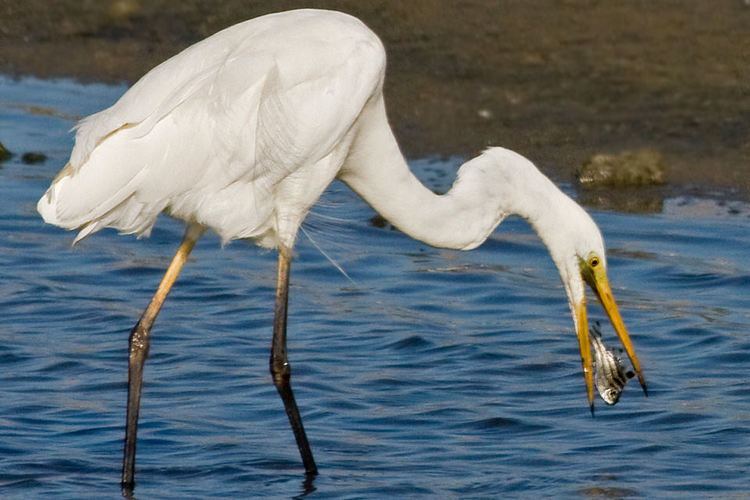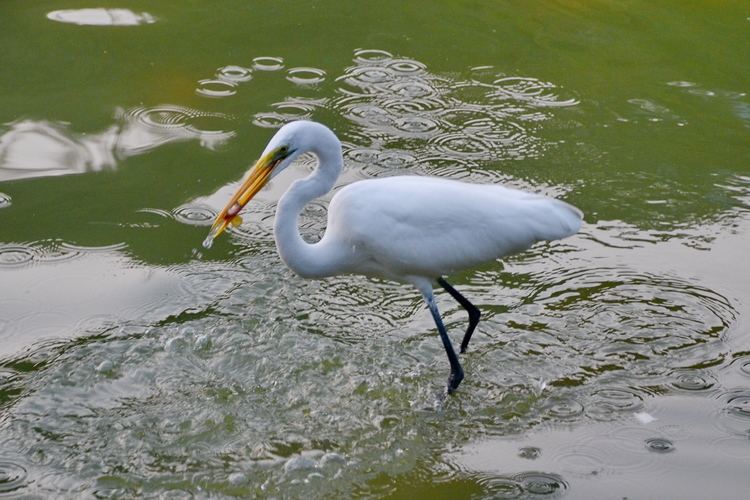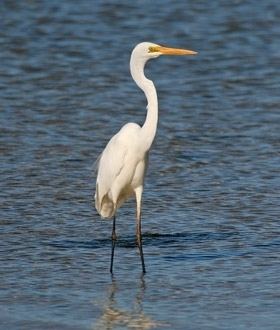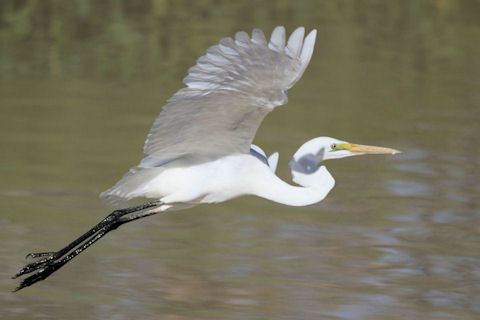Class Aves Family Ardeidae Scientific name Ardea modesta | Phylum Chordata Genus Ardea Rank Subspecies | |
 | ||
Similar Intermediate egret, White‑faced heron, Australian pied cormorant, Little pied cormorant, Australasian darter | ||
Cought prey swallow live by eastern great egret ardea alba modesta
The eastern great egret (Ardea alba modesta), a white heron in the genus Ardea, is a subspecies or rarely treated species of the great egret (A. alba). It was first described by British ornithologist John Edward Gray in 1831.
Contents
- Cought prey swallow live by eastern great egret ardea alba modesta
- Eastern great egret feeding
- Taxonomy
- Description
- Range and habitat
- Feeding
- Breeding
- Status
- References

Eastern great egret feeding
Taxonomy
Although a study argued for full species status in 2005, most taxonomists consider it to be a subspecies.
Description

Measuring 83–103 cm (33–41 in) in length and weighing 0.7–1.2 kg (1.5–2.6 lb), the eastern great egret is a large heron with all-white plumage. Its bill is black in the breeding season and yellow at other times, and its long legs are red or black. The colours of the bare parts of the face change to green during the breeding season. The breeding plumage is also marked by long neck plumes and a green facial area. The eastern great egret can be distinguished from other white egrets and herons in Asia and Australia by its very long neck, one and a half times as long as its own body.
Range and habitat

The eastern great egret has a wide distribution throughout Asia and Oceania, with breeding populations in Pakistan, India, Sri Lanka, Bangladesh, Burma, Thailand, China, Korea, north-eastern Russia, Japan, Indochina, Indonesia, Papua New Guinea, the Solomon Islands, Australia, and New Zealand. The egret breeds across Australia but only rarely in the southwest of the continent or dry interior. The largest colonies within Australia are in the Top End and Channel Country, which can number several thousand pairs. Colonies in the southeast of Australia can number several hundred pairs. The bird is an uncommon autumn and winter visitor to Tasmania.
Feeding

The diet includes vertebrates such as fish, frogs, small reptiles, small birds and rodents, and invertebrates such as insects, crustaceans, and molluscs. The eastern great egret hunts by wading or standing still in shallow water and "spearing" prey with its bill.
Breeding

The eastern great egret often breeds in colonies with other herons, egrets, cormorants, spoonbills and ibises. One brood is raised a year, although the breeding season varies within Australia. In the north of the country it is in March to May, in southern and central Queensland December and January, and October to December in the south. Located atop trees at a height of 20 m (60 ft) or more, the nest is a flat wide platform of dry branches and sticks with a shallow basin for eggs and young. The clutch consists of anywhere from two to six pale blue-green eggs, with three or four being the usual number. They are oval in shape and measure 52 x 36 mm.
Status
The subspecies is protected in Australia under the National Parks and Wildlife Act 1974. In New Zealand, where it is known by its Māori name kōtuku, the eastern great egret is highly endangered, with only one breeding site at Okarito Lagoon. It shares this site with the Kōtuku ngutupapa, or Royal spoonbill. It is featured on the reverse side of a New Zealand $2 coin.
